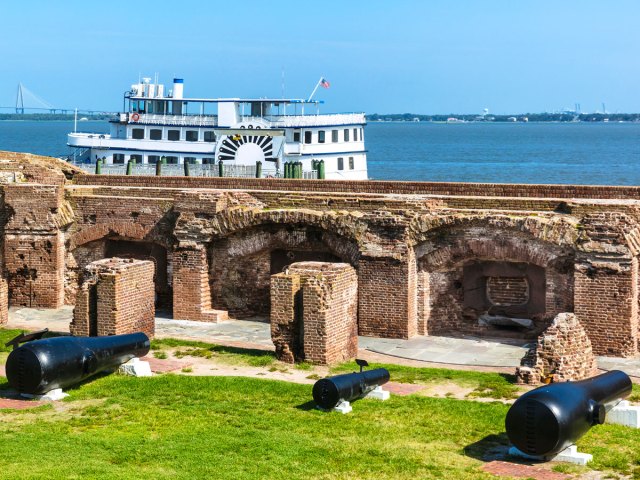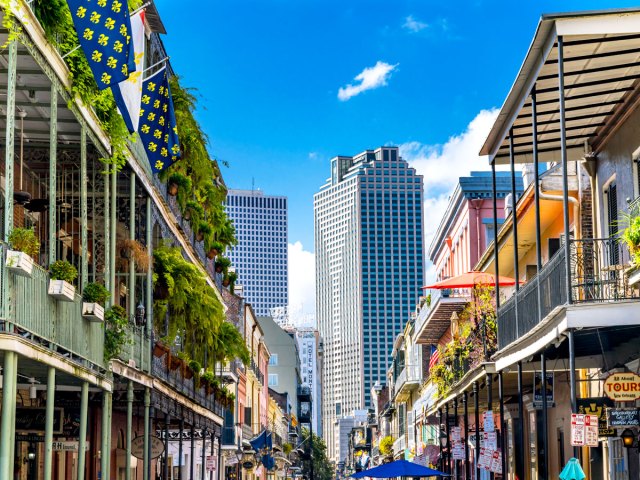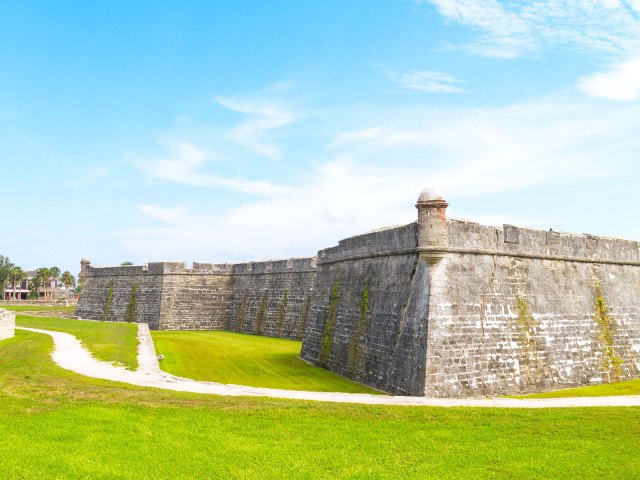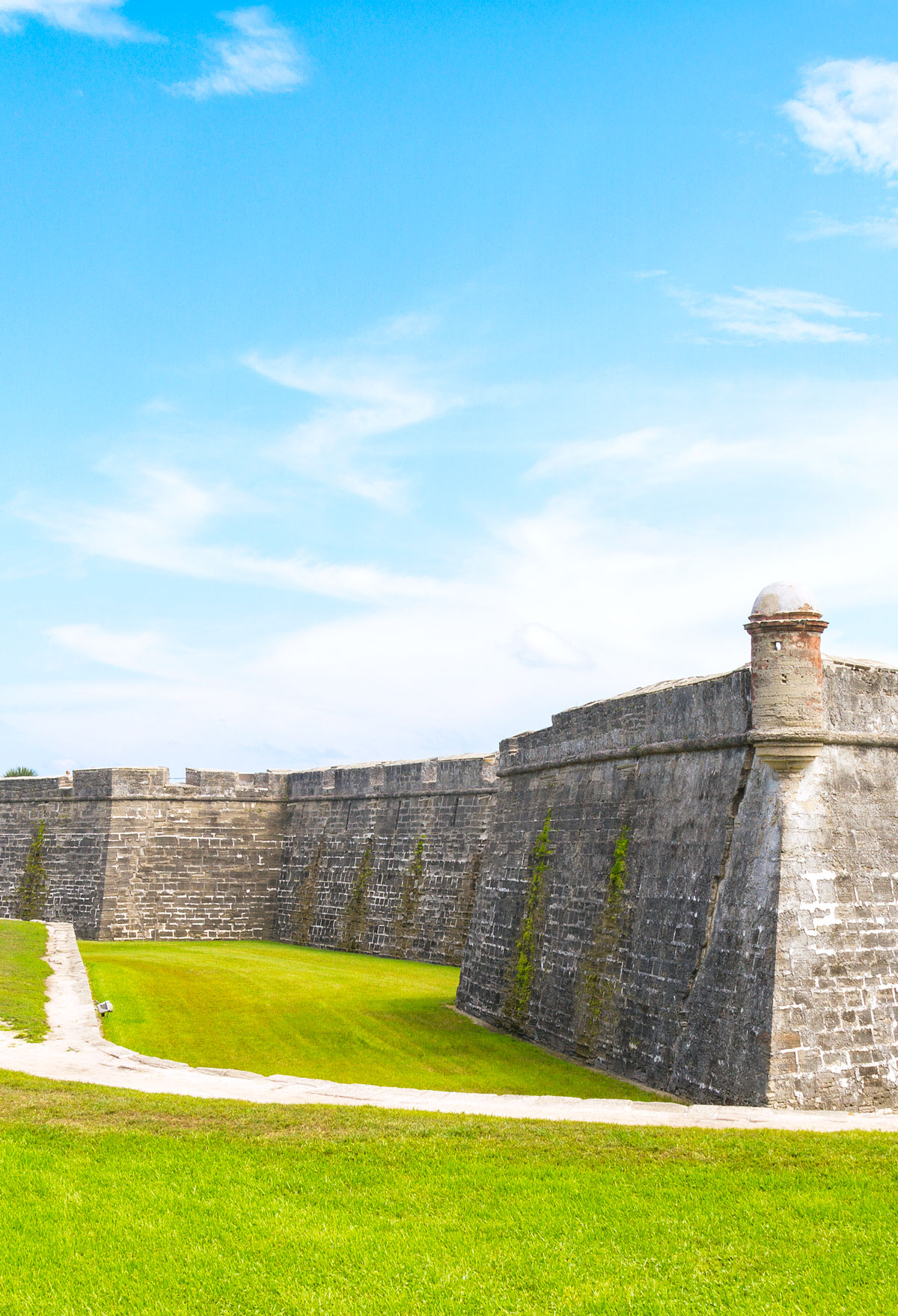When you think of walled cities, the charming medieval cities of Europe may come to mind. But North America has its own storied past of fortified settlements. From Spanish-built bastions to French colonial defenses in Canada, several cities once enclosed themselves behind stone and timber. Some of these walls remain today, while others survive only as street names, exposed foundations, and the layouts of old towns. Discover six North American cities that once had defensive walls.
Charleston, South Carolina

Charleston, originally called Charles Town, was once the only entirely walled city in the English colonies of North America. In 1704, amid fears of Spanish attacks, colonists constructed a nearly mile-long fortified enclosure. This 62-acre site consisted of earthen walls, bastions, a moat, and a single drawbridge-controlled gate. Twice damaged by hurricanes, the fortifications were also tested during the Yamasee War (1715 to 1717) and by threats from pirates, including Blackbeard’s blockade of 1718. By the 1780s, as threats diminished and the city expanded, the walls were neglected and dismantled.
While most of the original walls are now gone, archaeological efforts have uncovered a few remnants, including the remains of a battery in the basement of the Old Exchange and Provost Dungeon. Meanwhile, the Powder Magazine Museum showcases Charleston’s colonial military history inside a 1713 gunpowder building.
Fort Frederica, Georgia

In the early 18th century, Georgia stood on the front line of a long-running rivalry between Britain and Spain. To defend the colony’s southern frontier, James Oglethorpe founded Fort Frederica in 1736. A group of 44 men and 72 women and children laid the foundations of a military garrison and town located on St. Simons Island. By the 1740s, Fort Frederica had grown into a thriving town of around 1,000 people. Georgia’s future was secured in 1742, when British forces defeated the Spanish at the Battle of Bloody Marsh. With the threat eliminated, the fort’s garrison was disbanded in 1749.
The entire area is now protected as the Fort Frederica National Monument. Guided walking tours, ranger-led programs, and demonstrations highlight what life was like for the English, Scottish, and Germanic settlers here. You’ll find interpretive exhibits, original artifacts, and children’s activities at the Visitor Center Museum, while hiking trails showcase the natural beauty of St. Simons Island.
New Orleans, Louisiana

New Orleans began as a French settlement in 1718, established by Jean-Baptiste Le Moyne de Bienville. He commissioned the cartographer Adrien de Pauger to design the streets of the Vieux Carré, today better known as the French Quarter.
De Pauger’s master plan was to create an orderly grid of streets and squares that would be fortified to prevent invasion. When Spain took control in the late 18th century, the city’s defenses were upgraded. The Spanish built five bastions, each with timber palisades, gun mounts, and moats. All but one were demolished after control of Louisiana was handed to the U.S. in 1807.
Walking the French Quarter today reveals memories of the Big Easy’s fortified past. Rampart Street is named so because it follows the line of the city walls. The U.S. Custom House occupies the site of Fort San Luis, while Fort San Fernando became Congo Square. Fort San Carlos, the only bastion kept intact by the United States, was dismantled in 1821. The grounds became the Old U.S. Mint, before opening as the Louisiana State Museum in 1981.
New York, New York

When New York was still the Dutch colony of New Amsterdam, a defensive wall was built to protect the settlement from potential attacks. Constructed in 1653, the wall ran across the width of lower Manhattan, from the Hudson River to the East River. After the English seized the city in 1664, they retained the wall. Control returned to the Dutch briefly in 1673, and they reinforced the defensive system before the English took control again the following year.
By the late 1600s, the wall had lost strategic importance, and in 1699, it was dismantled to allow for urban expansion. The structure itself is long gone, but its legacy survives in the name “Wall Street,” which marks the old footprint. In 1792, 24 merchants, stockbrokers, and traders signed the Burntwood Agreement, setting the foundation for the New York Stock Exchange. Many of today’s visitors don’t realize that one of the world’s busiest financial centers grew from a defensive line built to protect a colonial outpost.
St. Augustine, Florida

Established in 1565, St. Augustine is the oldest continuously occupied European settlement in the United States. Between 1672 and 1695, the Spanish built Castillo de San Marcos to defend the city, but following a siege by the English in 1702, during which much of the town was burned down, residents decided to enhance the defenses even further.
Starting around 1704, a series of earthenware walls known as the Lines were erected. The Cubo Line extended from the castle to the San Sebastian River. This was followed by the northern Hornabeque Line and southward-stretching Rosario Line. Sharp cactus plants and bayonets were used to increase the height of the walls.
Not just used for defensive purposes, the walls also symbolized social boundaries. Those residing inside them were generally deemed as having a higher status than those outside. The Old City Gates, rebuilt in 1808, mark the entrance to the city on St. George Street. Today, over 300 years of military history comes to life at the Castillo de San Marcos, while the St. Augustine Pirate and Treasure Museum reveals tales of swashbuckling raids.
Montreal, Quebec

French settlers, under the guidance of Gaspard-Joseph Chaussegros de Lery, erected Montreal’s city walls between 1717 and 1744. They replaced a wooden palisade that formed an oblong shape around Old Montreal. However, the 20-foot walls weren’t actually designed to withstand a serious attack, as officials believed that the arduous journey to the city was enough to deter invaders. The walls were only penetrated twice: once by the British in 1760 and then by U.S. troops in 1775. Ultimately, they were deemed a hindrance to urban expansion, and a decree was passed in 1801 for their destruction.
Today, remnants of the ancient city are displayed in the basement of the Montreal Museum of Archaeology. Other evidence is found in the Champ-de-Mars public park, where two lines of stone walls have been recovered from the original ramparts.
More from our network
Daily Passport is part of Inbox Studio, which publishes content that uplifts, informs, and inspires.























